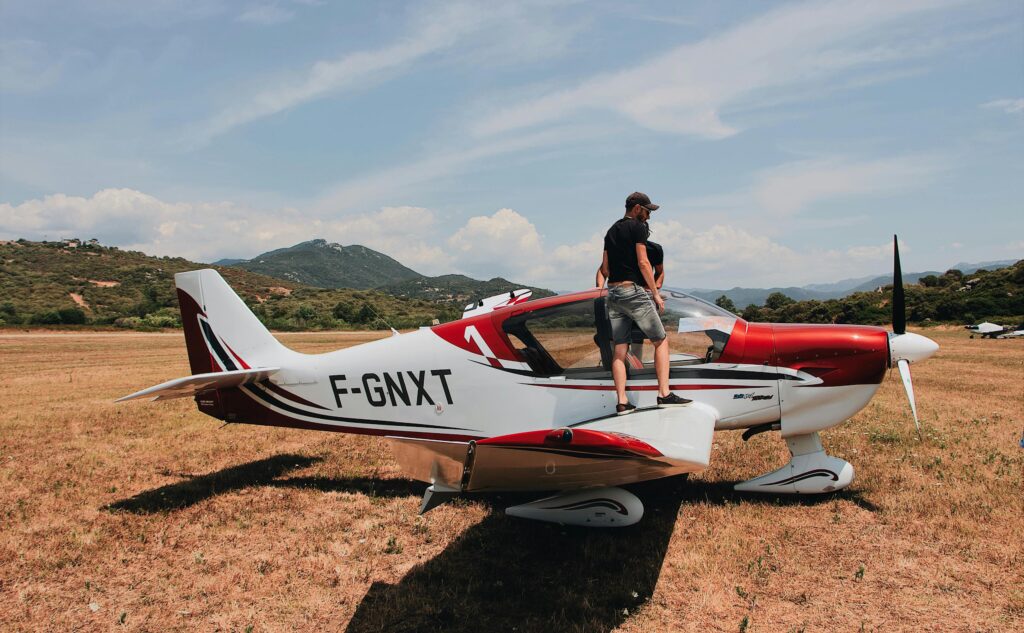
How Becoming a Pilot and Aircraft Owner Can Change Your Life – Part One
Travelling Has Become Increasingly Unbearable But Becoming a Pilot and Aircraft Owner Can Turn the Tide.
Travelling today is often a hassle, whether for business or leisure. Commercial air travel starts with the frustrating booking process. Direct flights are scarce, and convenient timings are rare. Even after paying, you can’t guarantee seats next to each other. Check-in procedures are cumbersome, and each airline requires a different app. On the travel day, busy airports add stress. Finding the baggage counter is challenging, and you’re left hoping your luggage arrives intact and on time. Security checks are hectic, and you’re surrounded by annoyed passengers. Gate changes are frequent, and flight delays are common.
Upon boarding, you might find no space for your hand luggage, forcing you to check it in. Your seat is often between noisy, inconsiderate people, and the onboard service is subpar. After landing, you face a disorganised disembarkation process. Missing connection flights is common, leaving you with a useless restaurant voucher in the middle of the night. If your luggage isn’t lost or damaged, consider yourself lucky.
Traveling by Airliner Is Not the Only Way to Hell
Traveling in general is stressful, not just by air. Public transport is crowded, unreliable, and often canceled. Car travel means dealing with traffic jams, especially during holidays, and navigating roads full of construction sites. Emergency situations, like the COVID-19 pandemic, have shown how painful traveling can be with restricted airliner operations and mask mandates.
General Aviation Aircraft to the Rescue
Operating and owning a general aviation aircraft isn’t easy but can be incredibly rewarding. After investing time in researching flight schools, licensing, and acquiring an aircraft, you’ll unlock new travel opportunities. Business trips and family vacations become more flexible and enjoyable. You choose your routes and schedules, allowing for a business trip on Thursday morning and a family vacation the next day.
You can use smaller airports and airfields, avoiding crowded terminals and enjoying quicker security checks. The General Aviation Center (GAC) terminals offer comfortable lounges and faster processes. No more lost baggage or undesirable travel companions.
Becoming a Pilot and Aircraft Owner Is a Process That Can be Laid Out and Streamlined
Before starting pilot training, do three things: find an aeromedical examiner for a medical check, obtain a radio license and language proficiency check if English isn’t your first language, and research flight schools or instructors.
Initial Pilot Training
Begin with the private pilot license (PPL) or private pilot certificate. Although other licenses like the light aircraft pilot license (LAPL) or sport pilot certificates exist, they are more restrictive. Complete the theoretical part of the training before the practical sessions. Aim for at least four flight hours per week to finish within three months. Plan for pre-flight checks, briefings, and preparation time, especially for cross-country flights. You’ll complete your training with a single-engine rating, allowing you to fly similar single piston engine aircraft types.
Build Up Experience
The fun begins here, but be cautious. Low-hour pilots can be overconfident. Gain experience by flying to different places and in various weather conditions regularly. Be curious, open-minded, honest about your capabilities, and receptive to feedback. Be your harshest critic and aim to become better with every flight. When you have accumulated sufficient experience—considering legal requirements and competency—you may step up to get more sophisticated ratings and your very own aircraft.
Get Additional Ratings and Your Very Own Aircraft
Transitioning from a low-hour pilot to an experienced aviator involves continuous learning and practice. As you build your hours and refine your skills, you’ll be ready to pursue advanced ratings. These additional certifications open doors to flying more complex aircraft and operating in diverse conditions. Owning your aircraft brings unparalleled freedom and flexibility to your travel plans. In our next blog post, we’ll dive into the specifics of acquiring advanced ratings and choosing the right aircraft for your needs.
Join the Waitlist
Interested in becoming a pilot and aircraft owner? We’re excited to announce that we’re building the Pilot-Owner Academy to offer exclusive, advanced training and experiences. Join our pilot-owner academy waiting list for guidance through your aviation journey.
About Quest Aeronautics
Quest Aeronautics is a state-certified engineering office for aviation, dedicated to shaping the future of general aviation by providing innovative and cost-effective solutions to enhance aircraft performance and operations. With a focus on CS/FAR-23 and experimental/amateur-built (E/A-B) aircraft, Quest Aeronautics provides a range of services including flight testing, aircraft operations and maintenance consulting, high-quality aviation products, and tailored support for E/A-B projects. Collaborating with industry-leading partners, Quest Aeronautics is committed to delivering unparalleled support and expertise to individuals and organisations in the general aviation market.
About Author
Sebastian, the founder of Quest Aeronautics, is a driven and enthusiastic individual with a passion for aviation. Before delving into aviation, he gained valuable experience as a chemical process engineer and laboratory technician. Sebastian holds a Master of Science in Engineering and a commercial pilot licence, with several fixed-wing aircraft ratings under his belt. He has also completed an introduction course for fixed-wing performance and flying qualities flight testing at the National Test Pilot School in Mojave, CA and is compliance verification engineer for flight.
